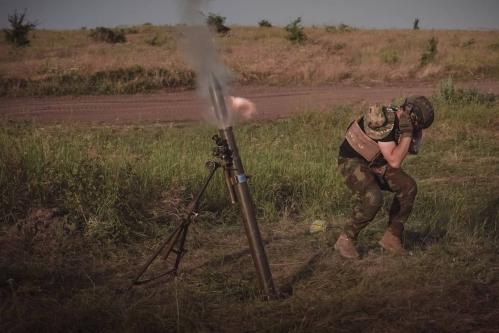Heightened tensions between China and Japan in recent months have triggered widespread debate over Beijing’s ultimate intentions and even predictions of direct armed conflict in the East China Sea. Is an acute crisis likely? What potential actions might China undertake to protect its interests?
The current dispute focuses on the Senkakus (known by China as the Diaoyus), a group of small uninhabited islands approximately equidistant between mainland China and the Japanese island of Okinawa. Beijing and Tokyo both claim sovereignty over the islands. But Japan has exercised continuous administrative control over the islands since the U.S. returned control to the Japanese in 1972.
Beginning in the fall of 2012, China began to actively challenge Japan’s claims to uncontested sovereignty by conducting Coast Guard patrols near the islands, sometimes supported by a People’s Liberation Army (PLA) naval presence. In November 2013, China upped the ante by declaring an Air Defense Identification Zone (ADIZ) that included the Senkakus, prompting added concerns about the potential for a direct clash between East Asia’s two major powers.
Some analysts view recent developments with genuine foreboding. On February 13, a senior U.S. intelligence officer publicly warned that China in late 2013 had conducted military exercises designed to overwhelm Japanese forces in the East China Sea. Speaking to a conference in San Diego, Captain James Fanell, director of intelligence for the U.S. Pacific Fleet, offered a dire forecast. Drawing on open source Chinese publications, Captain Fanell asserted that Mission Action 2013, a large scale Chinese amphibious and cross military region exercise, signaled that the PLA “has been given the new task to be able to conduct a short, sharp war to destroy Japanese forces in the East China Sea, followed with what can only be expected, a seizure of the Senkakus or even the southern Ryukyus.”
Are Captain Fanell’s claims credible? A careful review of dozens of reports in Chinese military media paints a very different picture. Mission Action 2013 was not a sudden, short attack. Rather, it was a series of three joint exercises launched by the PLA over a six week period during September and October, representing an extended campaign in a high intensity conflict. The operations were a continuation of PLA training evident since 1996. The exercises explicitly assumed that China had been attacked by an unidentified enemy. They focused on honing the command and control of joint operations with significant civilian support in a “complex electromagnetic environment,” and could presumably be applied to an assault on any island within reach of land-based Chinese aircraft. But they were clearly well in excess of what would have been required to occupy undefended islands. More important, none of the exercises involved military action needed to defend against the inevitable counterattacks that would follow such overt aggression.
The first exercise, consisting of 17,000 troops, began on September 10, while a simulated enemy was conducting air strikes and electronic jamming on the mainland. Units from a division in the Fujian area, transported by Navy and Army vessels, supported by Army aviation, special operation forces, Air Force units and naval artillery, assaulted an enemy-defended beach in Guangdong province. The second exercise launched on September 22 and commanded by an Air Force general, included more than 10,000 personnel. It involved nearly one hundred bombers, fighters, early warning, reconnaissance, and refueling aircraft that conducted an air raid and information/electronic warfare attack on a target “thousands of kilometers away.” Enemy forces responded by a major counterattack.
The third exercise (encompassing about 20,000 personnel) began in Guangdong province on October 11, with China assumed to be under direct attack. PLA forces focused on a forced landing in Fujian by a regiment of an amphibious mechanized infantry division transported by Navy and Army amphibious vessels and a civilian roll-on roll-off ship. The exercises highlighted China’s increased capability and will to defend Chinese territory. Such exercises no doubt trigger anxiety on the part of China’s maritime neighbors, but Chinese planners conceptualize them as part of a far more robust conventional deterrence posture than China was able to mount in previous decades.
If the PLA wanted to attack the Senkakus, the operation would not look like Mission Action 2013. Moreover, any attack begs the issue of how China would defend and supply forces isolated on islands 200 miles from its coast. The military leadership also knows that such actions would more than likely result in a U.S.-Japan air-sea onslaught, which they are not confident that they could successfully counter.
The Chinese may one day prove capable of the highly coercive actions outlined by Captain Fanell, but the PLA does not want to face the prospect of a humiliating defeat. Mission Action 2013 was not a “bolt from the blue” or a surgical strike, but it demonstrated the PLA’s determination to protect Chinese territory from external aggression. The image of a “short sharp war” might play well in worst case scenarios, but is it realistic to imagine that China will oblige those drawn to such dire forecasts? Or, as is far more likely, was China’s intention in Mission Action 2013 to underscore yet again that deterrence is its preeminent objective?



Commentary
Op-edIs China Preparing for a “Short, Sharp War” Against Japan?
February 25, 2014